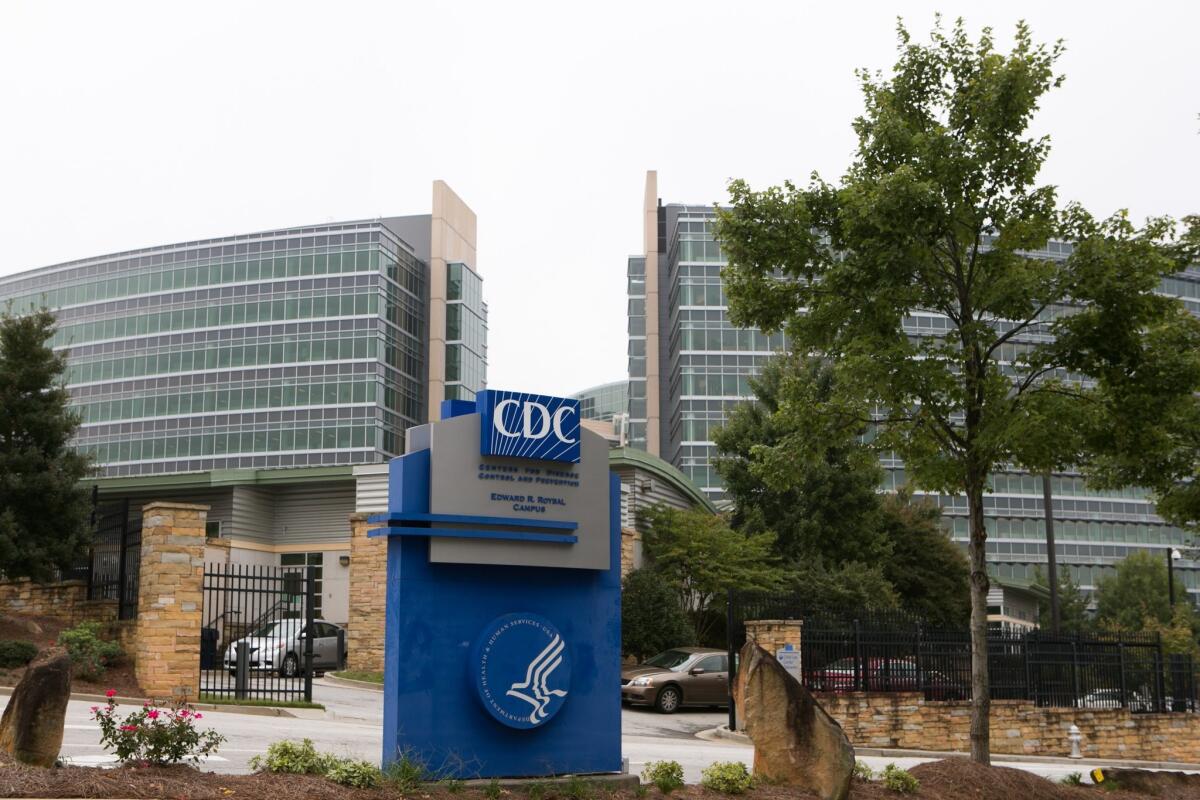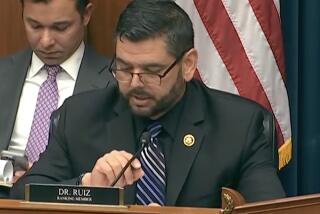Experts worry CDC is being sidelined in coronavirus response

- Share via
WASHINGTON — The Centers for Disease Control and Prevention has repeatedly found its suggestions for fighting the coronavirus outbreak taking a back seat to other concerns within the Trump administration. That leaves public health experts outside the government fearing that the agency’s decades of experience in beating back disease are going to waste.
“You have the greatest fighting force against infectious diseases in world history. Why would you not use them?” asked Dr. Howard Markel, a public health historian at the University of Michigan’s Center for the History of Medicine.
The complaints have sounded for months. But they have become louder following repeated revelations that guidance crafted by CDC scientists for preventing transmission of the novel coronavirus was never adopted by the White House.
The latest instance surfaced last week, when the Associated Press reported that President Donald Trump’s administration shelved a CDC document containing step-by-step advice to local authorities on how and when to reopen restaurants and other public places during the pandemic.
The administration has disputed the notion that the CDC had been sidelined, saying the agency is integral to the administration’s plans to expand contact tracing nationwide.
But it’s clear that the CDC is playing a much quieter role than it has during previous outbreaks.
The nation’s COVID-19 response has seen a strange turn for the CDC, which opened in 1946 in Atlanta as the Communicable Disease Center to prevent the spread of malaria, with a $10 million budget and a few hundred employees. Today, the agency has a core budget of more than $7 billion — a sum that has been shrinking in recent years — and employs nearly 11,000 people.
The CDC develops vaccines and diagnostic tests. Its experts advise doctors on how best to treat patients and teach state, local and international officials how to fight and prevent disease. Among the CDC’s elite workforce are hundreds of the world’s foremost disease investigators — microbiologists, pathologists and other scientists dispatched to investigate new and mysterious illnesses.
In 2009, when a new type of flu virus, known at the time as swine flu, spread around the world, the CDC held almost daily briefings. The agency’s experts released information on a regular basis to describe the unfolding scientific understanding of the virus and the race for a vaccine.
The federal response to the novel coronavirus initially followed a similar pattern.
The CDC first learned in late December of the emergence of a new disease in China, and the U.S. identified its first case in January. In those early days, the CDC held frequent calls with reporters. It also quickly developed a test it could run at its labs and a test kit to be sent to state health department labs to detect the virus.
But February proved to be a disaster. The test kit was flawed, delaying states’ ability to do testing. A CDC-run surveillance system, meant to look for signs of the virus in people who had thought they had the flu, was slow to get off the ground. Officials at the CDC and other federal agencies were slow to recognize that infections from Europe were outpacing ones from travelers to China.
But politically speaking, one the most striking moments that month was something that the CDC — in the eyes of public health experts — got perfectly right.
In late February, Dr. Nancy Messonnier — a well-respected CDC official who was leading the agency’s coronavirus response — contradicted statements by other federal officials that the virus was contained.
“It’s not so much a question of if this will happen anymore, but rather more a question of exactly when this will happen — and how many people in this country will have severe illness,” she said.
Stocks plunged. Trump was enraged.
The White House coronavirus task force moved to center stage. Vice President Mike Pence took control of clearing CDC communications about the virus. CDC news conferences stopped completely after March 9. Messonnier exited the public stage.
CDC Director Robert Redfield continued to keep the low profile he has had since getting the job. Two other task force members — coordinator Dr. Deborah Birx and Dr. Anthony Fauci of the National Institute of Allergy and Infectious Diseases — became the group’s chief scientific communicators.
Health experts have praised Fauci, but they say the CDC’s voice is sorely missed.
“At the White House briefings, [CDC] should be talking about antibody tests and if they work. How long do people have the virus if they’re infected? What are the data for that? The issue ought to be front and center. These are the questions CDC can answer,” said Dr. James Curran, a former CDC scientist who is now dean of Emory University’s public health school.
The government has continued to look to CDC officials for information and guidance, but there have been repeated instances when the agency’s recommendations are rejected.
In early March, administration officials overruled CDC doctors who wanted to recommend that elderly and physically fragile Americans be advised not to fly on commercial airlines because of the new coronavirus, the AP reported.
And last week, officials nixed CDC draft guidance that was researched and written to help faith leaders, business owners, educators and state and local officials as they begin to reopen.
The 17 pages of guidelines were never approved by Redfield to present to the White House task force, said an administration official who spoke on condition of anonymity to discuss internal deliberations. The guidelines were discussed at the task force level only after the drafts leaked publicly, and no decisions about them were ever made.
Still, the CDC guidelines were the subject of intense debate at the upper echelons of the White House. Some officials saw them as essential to helping businesses and other organizations safely reopen.
Others, including Mark Meadows, Trump’s chief of staff, did not believe it appropriate for the federal government to set guidelines for specific sectors whose circumstances could vary widely depending on the level of outbreak in their areas, according to a person familiar with the discussion. What was necessary for a coffee shop in New York and one in Oklahoma was wildly different, in their view.
More to Read
Sign up for Essential California
The most important California stories and recommendations in your inbox every morning.
You may occasionally receive promotional content from the Los Angeles Times.










